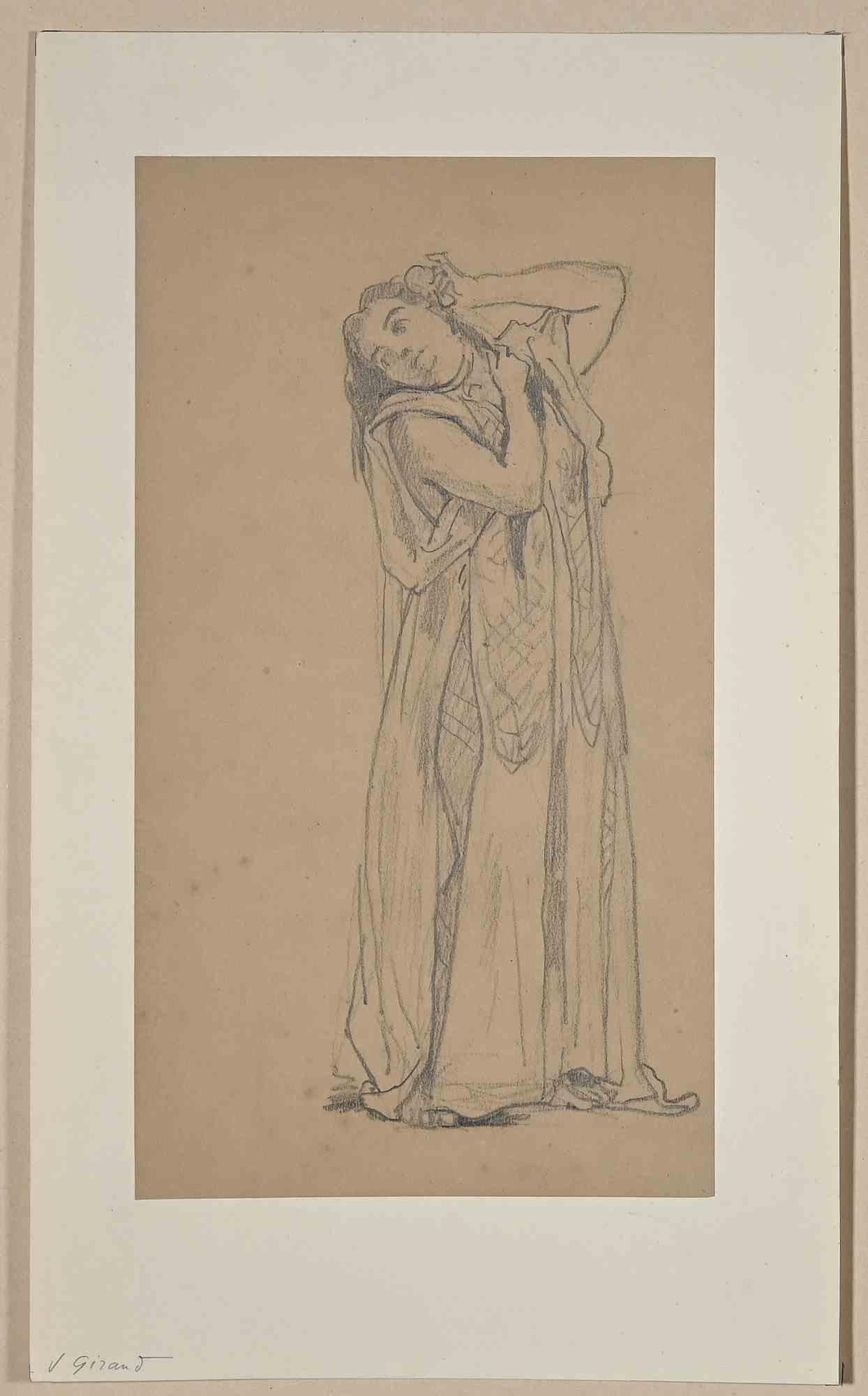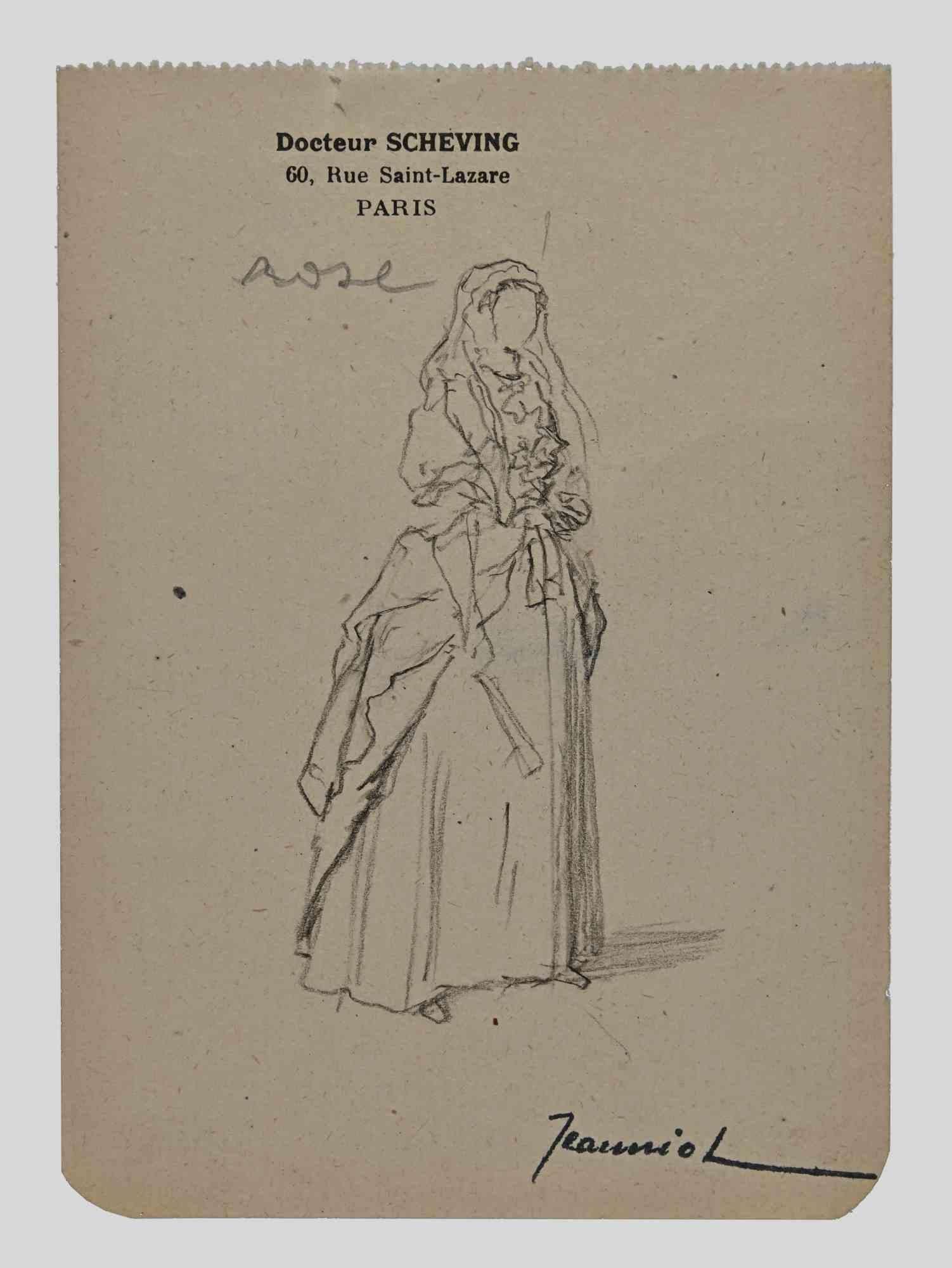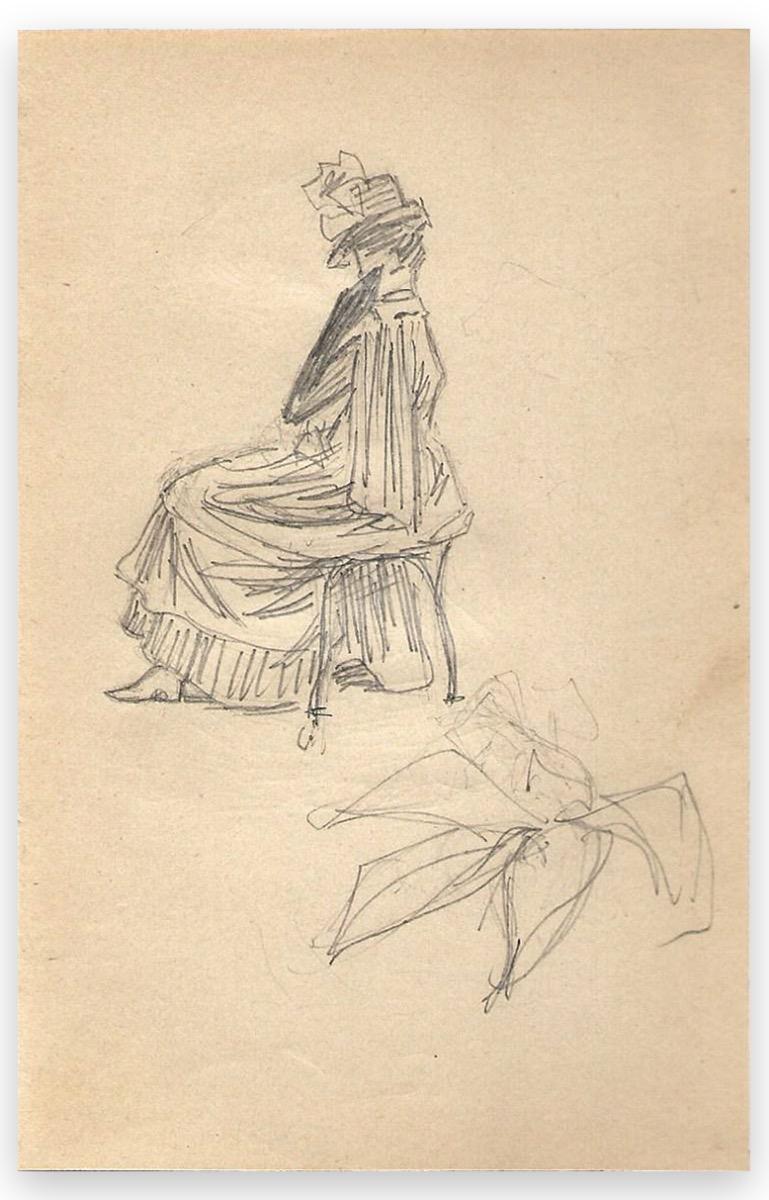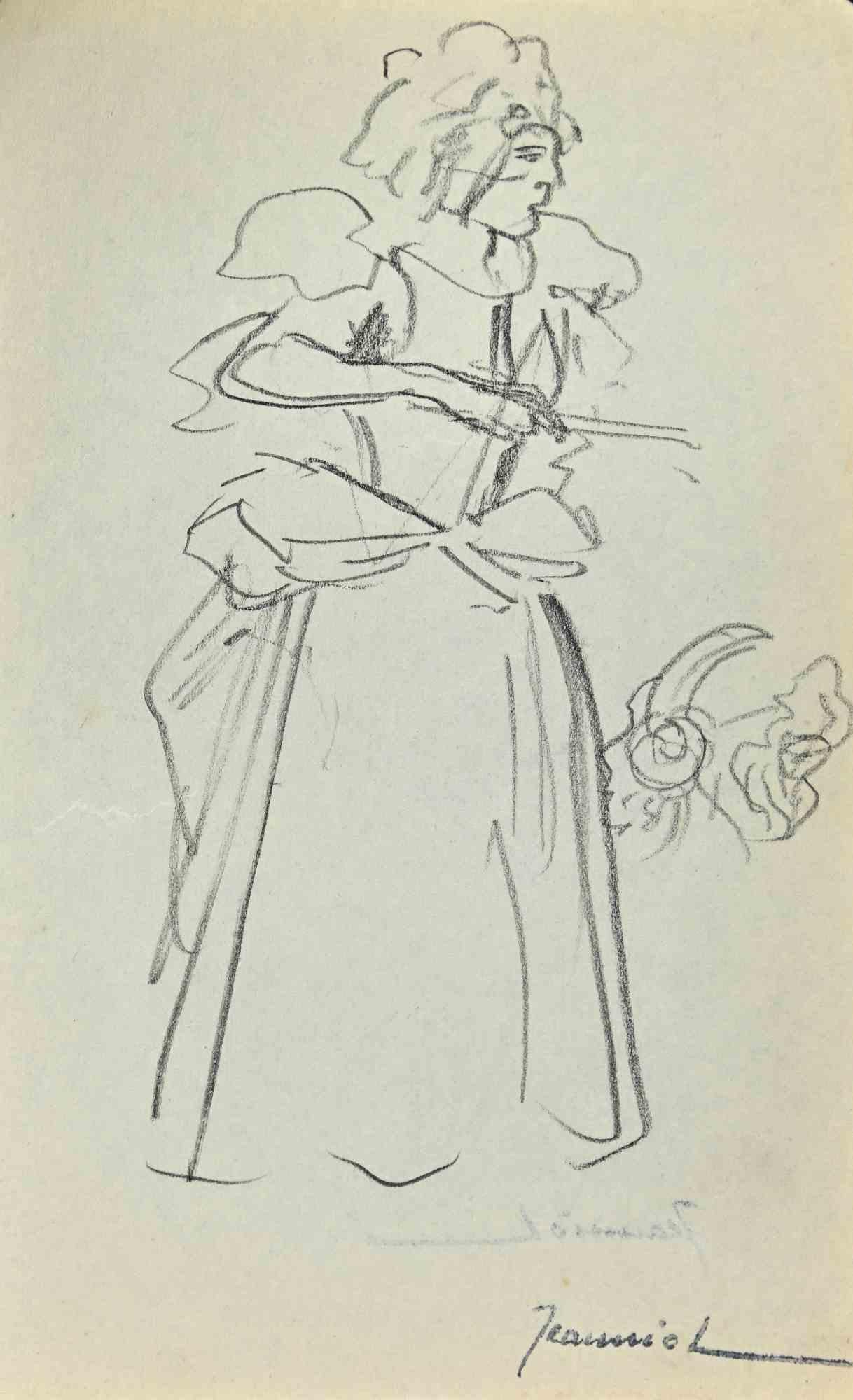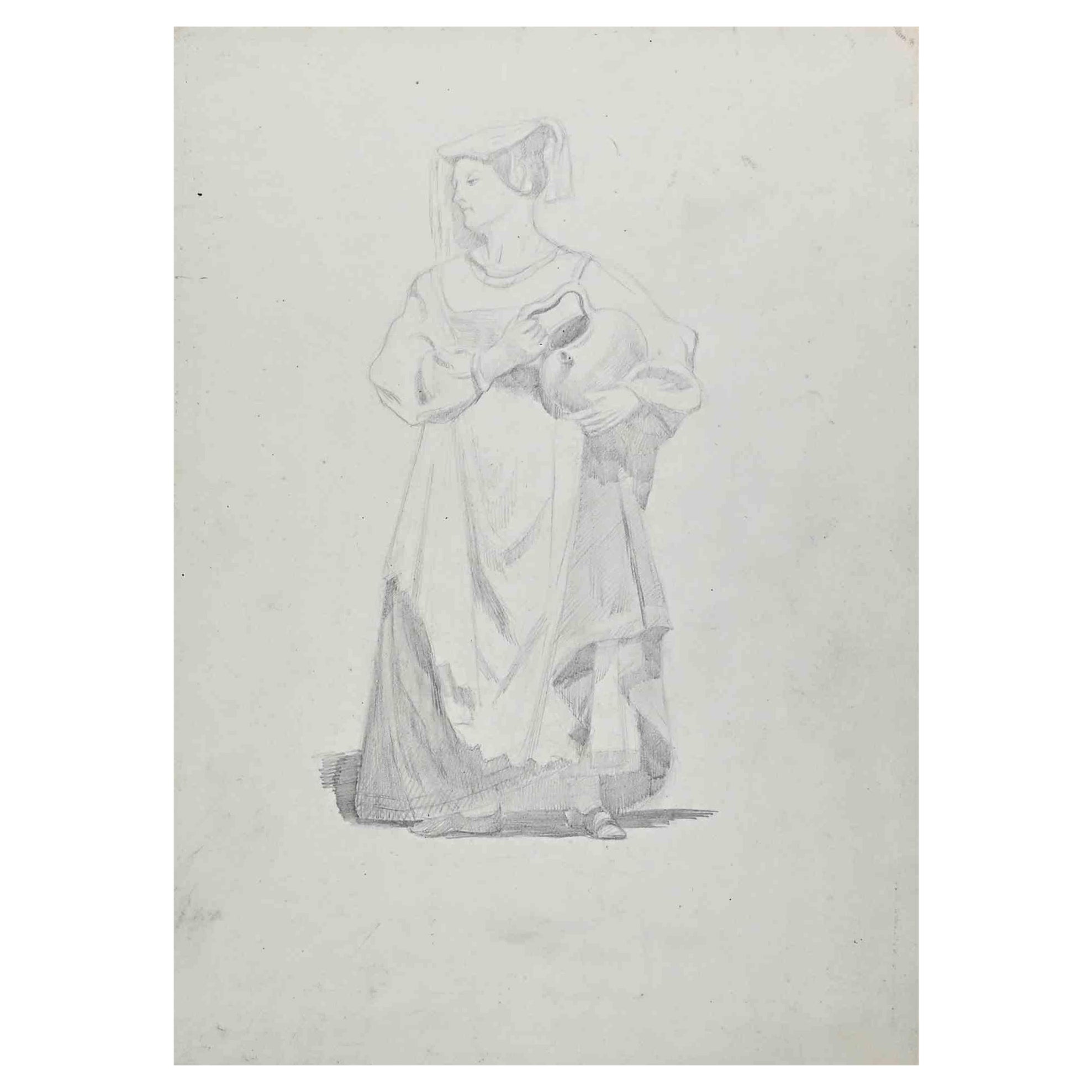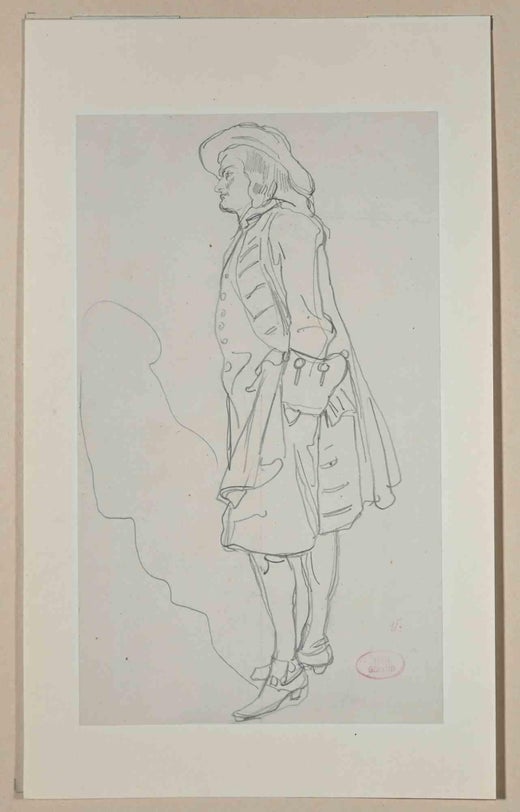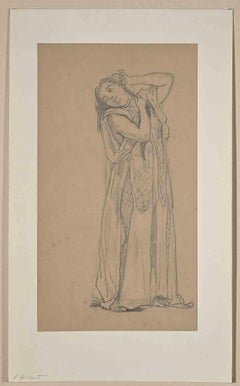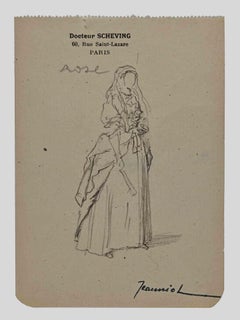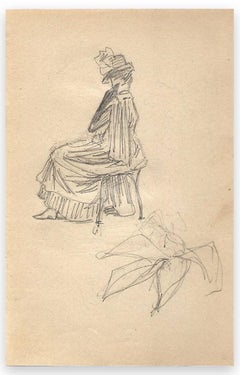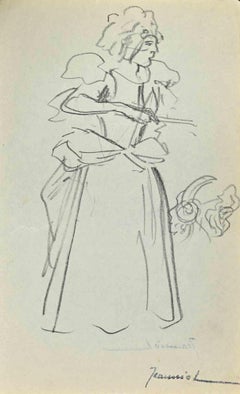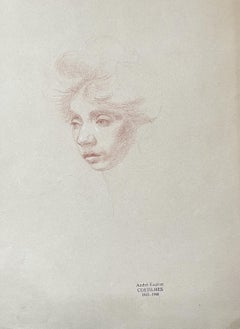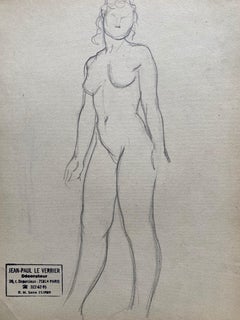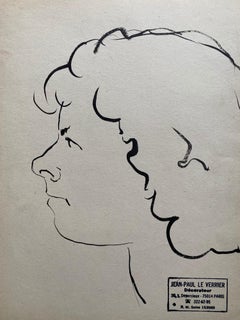Items Similar to Woman- Original Drawing on Paper by E. Giraud - Late 19th Century
Want more images or videos?
Request additional images or videos from the seller
1 of 3
Eugène GiraudWoman- Original Drawing on Paper by E. Giraud - Late 19th CenturyLate 19th Century
Late 19th Century
$361
£267.27
€300
CA$499.84
A$545.70
CHF 286.09
MX$6,627.74
NOK 3,572.78
SEK 3,373.66
DKK 2,283.96
About the Item
Woman of Man is an Original Drawing in Pencil realized by Eugène Giraud in the Late 19th Century.
Good conditions.
The delicate and beautiful fine strokes form the artwork. The mastery of the artist is represented by the expression of the figures.
- Creator:Eugène Giraud (1806 - 1881, French)
- Creation Year:Late 19th Century
- Dimensions:Height: 8.67 in (22 cm)Width: 5.91 in (15 cm)Depth: 0.08 in (2 mm)
- Medium:
- Movement & Style:
- Period:
- Condition:Insurance may be requested by customers as additional service, contact us for more information.
- Gallery Location:Roma, IT
- Reference Number:Seller: T-1302131stDibs: LU65039869472
Eugène Giraud
Pierre François Eugène Giraud was a French painter and engraver. Giraud painted one of the best-known portraits of the French writer Gustave Flaubert. He was a pupil of Hersant and won many awards and honors in recognition for his work and production. Giraud was Prix de Rome in 1826 and Legion of Honor in 1851.
About the Seller
4.9
Platinum Seller
Premium sellers with a 4.7+ rating and 24-hour response times
1stDibs seller since 2017
7,709 sales on 1stDibs
Typical response time: 2 hours
- ShippingRetrieving quote...Shipping from: Monaco, Monaco
- Return Policy
Authenticity Guarantee
In the unlikely event there’s an issue with an item’s authenticity, contact us within 1 year for a full refund. DetailsMoney-Back Guarantee
If your item is not as described, is damaged in transit, or does not arrive, contact us within 7 days for a full refund. Details24-Hour Cancellation
You have a 24-hour grace period in which to reconsider your purchase, with no questions asked.Vetted Professional Sellers
Our world-class sellers must adhere to strict standards for service and quality, maintaining the integrity of our listings.Price-Match Guarantee
If you find that a seller listed the same item for a lower price elsewhere, we’ll match it.Trusted Global Delivery
Our best-in-class carrier network provides specialized shipping options worldwide, including custom delivery.More From This Seller
View AllYoung Lady - Original Drawing in Pencil by Eugène Giraud - Late 19th Century
By Eugène Giraud
Located in Roma, IT
Young Lady is an Original Drawing in pencil realized by Eugène Giraud in the Late 19th Century.
Applied on a Cardboard, included a blue Passepartout: 41 x 33 cm
Good conditions.
T...
Category
Late 19th Century Modern Figurative Drawings and Watercolors
Materials
Pencil
Woman - Original Drawing By Pierre Georges Jeanniot - Early 20th century
By Pierre Georges Jeanniot
Located in Roma, IT
Woman is an original Drawing on paper realized by the painter Pierre Georges Jeanniot (1848-1934).
Drawing in Pencil.
Hand-signed on the lower.
Good conditions except fr being age...
Category
Early 20th Century Modern Portrait Drawings and Watercolors
Materials
Pencil
Sketch of a Woman - Original Drawing by George Auriol - 1890s
Located in Roma, IT
Sketch of a Woman sitting from behind is an original graphite drawing on vellum realized by George Auriol, in 1890s.
Unsigned. Stamp on the back by G. Auriol.
Good conditions.
Geo...
Category
1890s Figurative Drawings and Watercolors
Materials
Paper, Pencil
Woman - Pencil Drawing By Pierre Georges Jeanniot - Late 19th Century
By Pierre Georges Jeanniot
Located in Roma, IT
Woman is an Original Pencil Drawing realized by Pierre Georges Jeanniot (1848-1934).
Hand-Signed and some notes by the artist on the lower left corner.
Good condition.
Pierre-Geo...
Category
Late 19th Century Modern Figurative Drawings and Watercolors
Materials
Pencil
Woman - Original Drawing on Paper by A..E Viollet-Le-Duc - Mid 19th Century
Located in Roma, IT
Woman is an Original Pencil Drawing realized by Adolphe Etienne Viollet-Le-Duc (1817-1878).
Good condition on a white paper included a green cardboard passpartout (48x34 cm).
No Si...
Category
Late 19th Century Modern Figurative Drawings and Watercolors
Materials
Pencil
Woman - Drawing by Pierre Georges Jeanniot - Early 20th Century
By Pierre Georges Jeanniot
Located in Roma, IT
Woman is a Pencil drawing realized by Pierre Georges Jeanniot in the Early 20th Century.
Good condition on a yellowed paper.
Hand-signed.
Pierre-Georges Jeanniot (1848–1934) wa...
Category
Early 20th Century Modern Figurative Drawings and Watercolors
Materials
Pencil
You May Also Like
André Eugène Costilhes (1865-1940) Portrait of a lady, drawing
By André Eugène Costilhes
Located in Paris, FR
André Eugène Costilhes (1865-1940)
Portrait of a Lady
bears the stamp of the studio of André Eugène Costilhes in the lower right-hand corner
pencil red chalk and heightenings of whi...
Category
Early 1900s Symbolist Portrait Drawings and Watercolors
Materials
Pencil
Mid 20th century French Original Line Drawing sketch Nude Lady - Stamped
Located in Cirencester, Gloucestershire
Portrait sketch
original drawing by Jean-Paul LE VERRIER (1922-1996)
studio stamped
pencil drawing on paper, unframed
Double sided
10.5x 8.25 inches
provenance: private collection o...
Category
Mid-20th Century Impressionist Figurative Drawings and Watercolors
Materials
Ink
Mid 20th century French Original Line Drawing sketch Portrait Female
Located in Cirencester, Gloucestershire
Portrait sketch
original drawing by Jean-Paul LE VERRIER (1922-1996)
studio stamped
ink on paper, unframed
Double sided
10.5 x 8.25 inches
provenance: private collection of the arti...
Category
Mid-20th Century Impressionist Figurative Drawings and Watercolors
Materials
Ink
$104 Sale Price
20% Off
French Woman with Japanese Inspired Gown - Pencil drawing - circa 1916
By Georges Conrad
Located in Paris, IDF
Georges CONRAD (1874-1936)
French woman with Japanese inspired gown
Original pencil drawing
Signed by stamp of atelier
On paper 26.5 x 20 cm (c. 10,4 x 7.8 in)
Good condition, pap...
Category
1910s Academic Figurative Drawings and Watercolors
Materials
Pencil
Octave Denis Victor Guillonnet (1872 - 1967) A woman seated, drawing signed
By Octave Guillonnet
Located in Paris, FR
Octave Denis Victor Guillonnet (1872 - 1967)
A young woman seated
signed lower leftt
Charcoal, red and white chalks on thin paper transfered on cardboard
49 x 39 cm
Framed : 55.5 x ...
Category
1930s Art Deco Portrait Drawings and Watercolors
Materials
Chalk, Charcoal
Attributed to Eugene Deully (1866-1933) A woman, study, drawing
Located in Paris, FR
Attributed to Eugene Deully (1866-1933)
A woman , study,
Pencil and heightenings of white gouache on blue grey paper in two parts, the left part added
...
Category
1890s French School Nude Drawings and Watercolors
Materials
Pencil
More Ways To Browse
Green Abstract Art Paint
Purple Abstract Paintings
Black And White Celebrity Photography
Cloud And Sky Landscape Paintings
Art Basel
Oil Paintings Of A Bridge
Geometric Abstraction
48 X 48 Abstract Painting
Vintage Serigraph
Blue Green And Yellow Abstract
Salvador Dali Vintage
Collection Of Prints Mid Century Modern
Old Master Prints Etchings
Paris Art Print
Large Contemporary Art
Oil Painting South Of France
Parsons School
British Landscape Oil Canvas Painting
